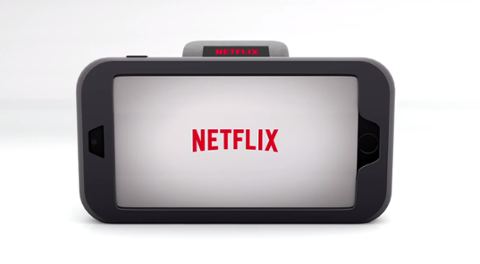Netflix's Unique Culture of Termination... That Employees Seem to Like
We hear a ton of great things about Netflix's benefits and corporate culture, such as unlimited parental leave and an overall good pay/perks package. The firm fights for net neutrality, and people want to work there more than at other major tech companies. But once you're hired at Netflix, it might prove difficult to keep your job for the long term. Specifically, Netflix has something called the “keeper test,” which is a measure for management to fire or retain staff. It's very simple; a manager is supposed to ask: "If one of the members of the team was thinking of leaving for another firm, would I try hard to keep them from leaving?" If the answer is "no," that team member is out. One former marketing vice president told The Wall Street Journal they were fired for failing the test, but the "official" reason for termination was "poor cultural fit." Meanwhile, a Bloomberg article revisits the early days of Netflix, during which a similarly opaque management dictum governed hiring and firing. CEO Reed Hastings and then-HR Chief Patty McCord wanted to encourage “independent decision making” among employees, but also retain only those who were “highly effective.” As a result, they nurtured a culture in which even longtime employees were ruthlessly evaluated; if they were no longer the best at their role (at least in the eyes of their manager), they were out. Ultimately, this corporate mindset cost McCord her job. When Hastings questioned whether he’d retain McCord for her own job, he realized he wouldn’t, so he fired her. Netflix now has a formal tool called "360," which allows anyone at the company to review anyone else (including Hastings). The tool also provides context to everyone on why someone was let go – which also feeds into Netflix’s original five rules for the company (among them: “share information openly, broadly and deliberately,” and be “extraordinarily candid with each other.”) The "360" and the "keeper test" are intertwined. The crux of these tests is to help managers decide (as Hastings did with McCord) if they would fight to keep an employee around. If the answer is no, that employee is terminated or asked to leave. Netflix’s 360 tool provides broad context for personnel decisions. It’s meant to encourage objectivity, but it also seems to produce obscure, sometimes startling changes in the hierarchy. Last year, Hastings terminated chief product officer Neil Hunt. The reason given was “a lot has changed” as the company began producing original content and expanding into new markets outside the United Sates. Moreover, one of Hunt’s charges was apparently poised to take over his role. Even so, his dismissal didn't follow the usual corporate playbook for such things. Neither Hunt or McCord disagreed with Hastings’ decisions. Bloomberg also notes that Netflix’s termination rate isn’t incongruous with the national average, and the company has a far lower percentage of people quitting versus the average U.S.-based company. But a company’s culture starts and ends with its leader. This culture of ‘objective’ termination works for Hastings, and it’s meant to create an effective leadership team in his likeness. But it could also create an office where people are in near-constant fear for their jobs. Simply put, you can’t copy it, because you’re not Reed Hastings, and your company isn't Netflix. Nor can you likely become him. Employees describe him as a man “unencumbered by emotion.” Though they mean that in a good way (we think), it’s not something you can just choose to emulate. As Netflix evolves, these hiring tests may not stand the test of time internally, and it might not serve you well to emulate them in your own company.


